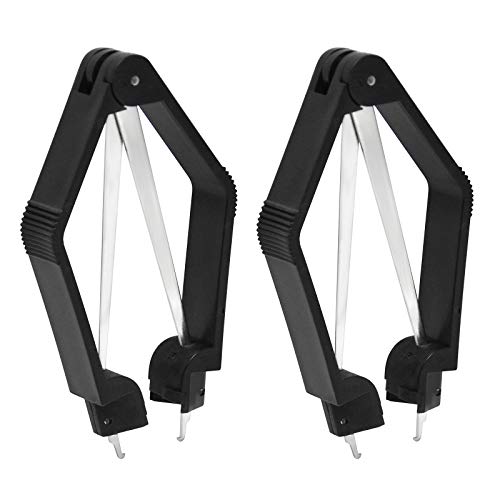hiscomm said:
I recently did some experimentation with reverse plating on a small gold plated baby spoon onto a stainless steel 5/8 round. I used a commercial gold stripper that is noncynanide. It seemed to strip the spoon quickly, I had my power 1.5- 2.5 volts but what showed up on my stainless was a black residue coating. I did not see a gold 24 K color which was on the spoon. Also my stainless is not a super high grade if that matters or not. Is that residue the gold?
Please set me straight! thanx!
Temperature 120-150ºF (49E - 65E C)
Current Density Reverse plate at 3-6 Volts (30-100 ASF)
PH 4-4 2
Beaker Pyrex
Anodes Stainless Steel
Bath Set Up:
1. Fill beaker with Strip-Free™ and heat to 140EF.
2. Check connections from rectifier to anode and work to be sure they are
reversed. Negative (-) and positive (+) wires are connected properly.
The work should be charged positive (+) , and the anode negative (-).
Turn rectifier on.
3. Reverse Plate for 30-90 seconds at 3-6 volts depending on size of part
and thickness of gold which is being stripped.
4. Larger parts require slightly higher voltage, while smaller parts
require lower voltage. If part shows any burning such as dark grey or
rough deposits around the edges, you are burning the part and must
lower the voltage. If part is not stripped after 3- 5 minutes of
stripping, voltage it too low, there increase voltage slightly.
5. After stripping rinse part thoroughly in water and either dry or
replate. If replating: Dip part in Activator-T for 2 minutes, rinse, plate
a mirror finish, rinse, then continue plating process with a Decorative
finish such as gold or silver.
Trouble Shooting:
Pieces not Plating
Plated layer under gold is black or
grey
or
Pieces turn hazy, cloudy, and too
dull
$ Check power supply, make sure
switch is on.
$ If switch is on, check fuse.
$ Check connections from power
supply to anode and part.
$ Voltage too low
$ Anode/ Cathode connections are
reversed to plate not strip.
$ Voltage is too high.
$ Excessive stripping time










































![Penagic Pens, P-223A, Gel Pens Fine Point [0.5mm] Black Ink, Roller Ballpoint Pens Matt Design, Stationery Pens for School Office Supplies](https://m.media-amazon.com/images/I/41nT+Qatb3L._SL500_.jpg)
































